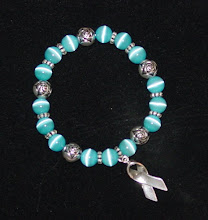By: Juliet Cohen
Blood is a parts of the body. Blood has different components sch as red blood cells, white blood cells, platelets and plasma. The red blood cells (rbc), platelets also called monocytes because it is belong to the “myeloid” group and other white blood cells belong to the “lymphoid” group. Lymphoid cells are affected. Disease progresses quickly. This is most common among children. Blood cancer or Leukaemia is actually a group of diseases, each of which impede with the normal functioning of blood cells and progressively weaken the system.leukaemia is classified as either Acute or Chronic. Blood and urine samples may also be tested for various substances, called tumor markers, which may indicate cancer.
Tumor markers are typically chemicals made by tumor cells, but tumor makers are also produced by some normal cells in your body. Lymphoid cells are affected. Disease progresses over a long period.Usually affects adults, more men than women.Myeloid cells are affected. Disease progresses over a long period of time. More common among adults. One of the major goals of the trial was to compare the two groups in terms of risk of graft-versus-host disease (GVHD), a common and sometimes fatal complication of allogeneic transplants in which the patient’s immune system attacks the transplant.
Causes of Blood Cancer
1. Exposure to radiation.
2. Exposure to chemicals.
3. Human T-cell Leukaemia Virus (HTLV)
4. Genetic factors (chromosomal abnormalities).
Symptoms of Blood Cancer
1. Tiredness.
2. Bleeding.
3. Bruising.
4. Fever.
5. Weight loss.
Treatment of Blood Cancer
Chemotherapy is destroy the abnormal cancer cells. If the leukaemia returns (relapses), intensive treatment may be given. This involves a bone marrow or a stem cell transplant.Stem cell transplant involves transplanting stem cells (the most basic type of cell, from which all types of blood cells develop), rather than bone marrow cells. Stem cells can be harvested (collected) from a leukaemia patient’s own blood or from a donor. Bone marrow or stem cell transplants allow much higher doses of chemotherapy to be given. Before transplantation, very high doses of chemotherapy and sometimes radiotherapy are given to destroy all the bone marrow, both abnormal and normal.
Article Source: http://www.articlerich.com
Blood is a parts of the body. Blood has different components sch as red blood cells, white blood cells, platelets and plasma. The red blood cells (rbc), platelets also called monocytes because it is belong to the “myeloid” group and other white blood cells belong to the “lymphoid” group. Lymphoid cells are affected. Disease progresses quickly. This is most common among children. Blood cancer or Leukaemia is actually a group of diseases, each of which impede with the normal functioning of blood cells and progressively weaken the system.leukaemia is classified as either Acute or Chronic. Blood and urine samples may also be tested for various substances, called tumor markers, which may indicate cancer.
Tumor markers are typically chemicals made by tumor cells, but tumor makers are also produced by some normal cells in your body. Lymphoid cells are affected. Disease progresses over a long period.Usually affects adults, more men than women.Myeloid cells are affected. Disease progresses over a long period of time. More common among adults. One of the major goals of the trial was to compare the two groups in terms of risk of graft-versus-host disease (GVHD), a common and sometimes fatal complication of allogeneic transplants in which the patient’s immune system attacks the transplant.
Causes of Blood Cancer
1. Exposure to radiation.
2. Exposure to chemicals.
3. Human T-cell Leukaemia Virus (HTLV)
4. Genetic factors (chromosomal abnormalities).
Symptoms of Blood Cancer
1. Tiredness.
2. Bleeding.
3. Bruising.
4. Fever.
5. Weight loss.
Treatment of Blood Cancer
Chemotherapy is destroy the abnormal cancer cells. If the leukaemia returns (relapses), intensive treatment may be given. This involves a bone marrow or a stem cell transplant.Stem cell transplant involves transplanting stem cells (the most basic type of cell, from which all types of blood cells develop), rather than bone marrow cells. Stem cells can be harvested (collected) from a leukaemia patient’s own blood or from a donor. Bone marrow or stem cell transplants allow much higher doses of chemotherapy to be given. Before transplantation, very high doses of chemotherapy and sometimes radiotherapy are given to destroy all the bone marrow, both abnormal and normal.
Article Source: http://www.articlerich.com



No comments:
Post a Comment